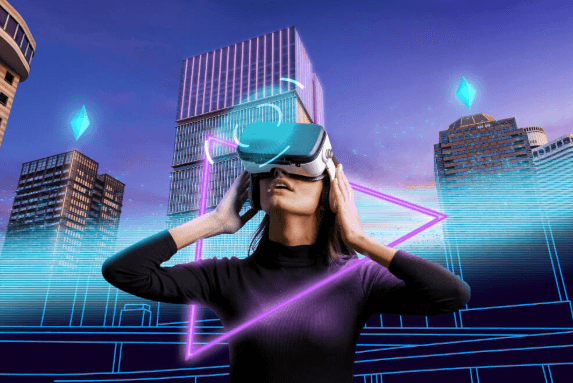Ways Immersive Experiences Are Revolutionizing Entertainment and Beyond

Immersive experiences are redefining entertainment by allowing audiences to step inside stories, interact with characters, and explore vivid worlds. From VR theme parks to interactive theater, these innovations are not just changing content consumption—they’re revolutionizing storytelling itself. This new era of engagement is reshaping entertainment and industries far beyond Hollywood, offering limitless adventures and unforgettable moments for all.
The Evolution of Entertainment: From Traditional to Immersive
The evolution of entertainment has transitioned from traditional, passive experiences to highly immersive and interactive ones. Storytelling began as a communal activity, with oral narratives shared around fires. Over time, books, radio, and television provided ways to consume stories as observers.
With digital technologies, video games revolutionized entertainment by allowing users to influence narratives, fostering participation. Today, immersive technologies like VR and AR have transformed entertainment into a multi-sensory experience, enabling real-time interaction and exploration of virtual and augmented worlds.
As these technologies advance, entertainment continues to evolve, blending sensory elements, interactivity, and storytelling, creating deeply engaging and participatory experiences.
The Technology Behind Immersive Experiences
The technology behind immersive experiences has transformed how we interact with digital environments, providing enhanced engagement and realism.
- Virtual Reality (VR): VR headsets create a fully immersive experience by focusing on visual and auditory stimuli. Equipped with motion sensors and accelerometers, these headsets track users’ movements in real-time, enhancing the feeling of presence. Powerful graphics engines generate detailed 3D worlds, offering a deep immersion.
- Augmented Reality (AR): AR overlays digital elements onto the real world, typically through smartphones or smart glasses. It uses real-time tracking to create interactive content that adapts to physical surroundings, blending the digital and physical worlds.
- Mixed Reality (MR): MR combines VR and AR to enable real-time interaction with physical and virtual objects. Users can manipulate holograms while interacting with the real world, creating a seamless integration of both realms.
Immersive technologies use advanced algorithms, motion tracking, and graphics engines like Unreal.
Types of Immersive Experiences (Virtual Reality, Augmented Reality, Mixed Reality)
Immersive experiences are categorized into three main types: Virtual Reality (VR), Augmented Reality (AR), and Mixed Reality (MR), each offering distinct ways to engage users and enhance creativity across various industries.
- Virtual Reality (VR): VR immerses users completely in a digital world, isolating them from their physical environment. It is ideal for gaming, simulations, and training, providing highly interactive and realistic experiences.
- Augmented Reality (AR): AR overlays digital content onto the real world, allowing users to interact with virtual elements while remaining aware of their physical surroundings. Examples include apps like Pokémon GO, which blends digital creatures with real-world locations.
- Mixed Reality (MR): Mixed Reality (MR) blends VR and AR, allowing users to interact with virtual objects in the real world. It’s used in design, education, and healthcare for more interactive experiences.
These immersive technologies are transforming various sectors, offering new ways to engage users and enhance digital and physical interactions.
How Immersive Experiences are Changing the Entertainment Industry
Immersive experiences are revolutionizing the entertainment industry by enabling audiences to actively engage with content, creating deeper connections and memorable moments.
- Virtual Reality (VR) and Augmented Reality (AR): Immersive technologies like VR and AR transform storytelling by making users active participants, blending digital worlds with real-world interactivity.
- Interactive Gaming: VR and AR have transformed storytelling by immersing users in digital worlds or enhancing real-world settings with interactive elements, enriching experiences in games, events, and marketing.
- Live Events and Performances: Immersive technologies are enhancing live concerts, theater, and other performances. Features like projection mapping, interactive soundscapes, and AR visuals make audiences feel more involved, creating the sensation of being part of the event.
- Dynamic Storytelling: Traditional formats like films and TV shows are evolving into interactive experiences, where audience decisions influence the narrative, providing personalized outcomes and making each viewing unique.
As technology continues to advance, immersive entertainment will redefine how we experience stories and interactions, offering innovative, emotionally resonant experiences that leave lasting impressions.
Ethical considerations and concerns with immersive technology
As immersive technologies like VR, AR, and MR evolve, ethical considerations are becoming increasingly important to ensure their responsible use. Key concerns include:
- Privacy: Immersive technologies often collect personal data through sensors and tracking devices, raising concerns about data security, consent, and misuse. Transparent data practices and strong security measures are needed to protect users’ privacy.
- Addiction and Mental Health: The immersive nature of these technologies can lead to excessive use, causing potential addiction and social withdrawal. Developers and regulators must promote healthy usage patterns to protect mental well-being.
- Content Manipulation: Immersive technologies can deeply influence emotions and perceptions, raising ethical concerns in advertising, political campaigns, and storytelling. Creators must use these tools responsibly to avoid exploitation and undue influence.
- Accessibility and Inclusivity: High costs for immersive technology devices could limit access, exacerbating social inequality. Ensuring affordability and accessibility is essential, especially in sectors like education and healthcare.
- Ethical Responsibility in Creation: Developers must balance innovation with societal impact, creating technologies that prioritize user welfare. Industry-wide guidelines for responsible design and content creation are necessary to mitigate risks.
Immersive technologies become more integrated into daily life, and addressing these ethical concerns is vital to ensure they benefit society without causing harm. Responsible development will help create a future where immersive experiences are engaging.
Read also: Threads Api Techmeme Hootsuitemehtatechcrunch
The Future of Immersive Experiences and Its Potential for Other Industries
The future of immersive experiences powered by technologies like virtual reality (VR), augmented reality (AR), and mixed reality (MR), is set to revolutionize various industries:
- Healthcare: VR enhances medical training by simulating surgeries and procedures, while AR aids surgeons with real-time information during operations. VR therapy is also helping treat mental health conditions like PTSD and anxiety.
- Manufacturing: MR overlays 3D models on machines, improving precision and efficiency, while VR helps train employees in safe, simulated environments for complex tasks.
- Retail: AR lets customers virtually try on products, reducing returns, while VR offers immersive virtual showrooms for a more engaging shopping experience.
- Education: VR provides interactive learning experiences by transporting students to historical events or scientific environments, while AR enhances real-world learning with interactive digital content.
- Architecture & Design: VR lets clients take virtual tours of buildings, while AR helps visualize designs in real-time, improving collaboration and the design process.
- Tourism & Travel: VR offers virtual travel experiences, and AR provides real-time information about landmarks and cultural sites, enhancing travel planning.
As immersive technologies continue to evolve they will create innovative solutions across sectors, enhancing efficiency, creativity, and interaction with the world. The possibilities for these technologies are vast and transformative.





